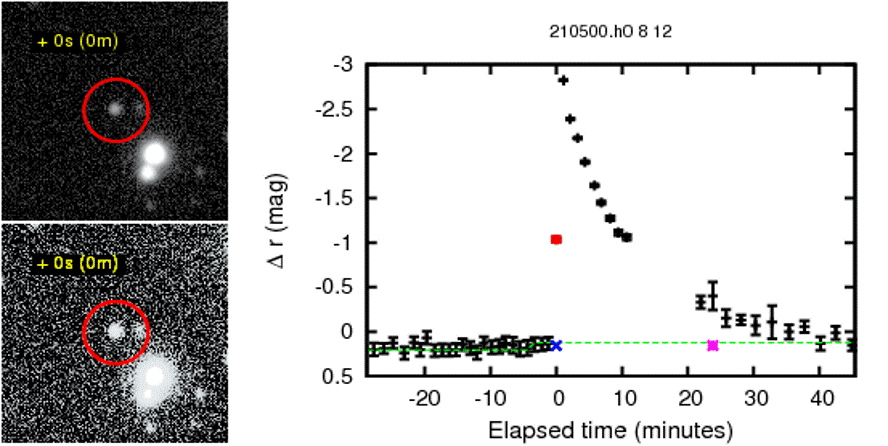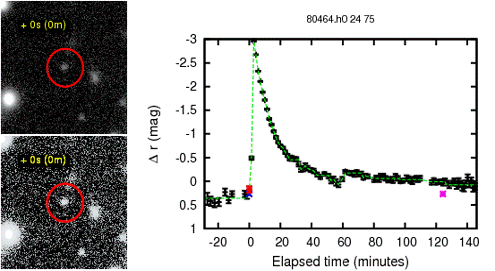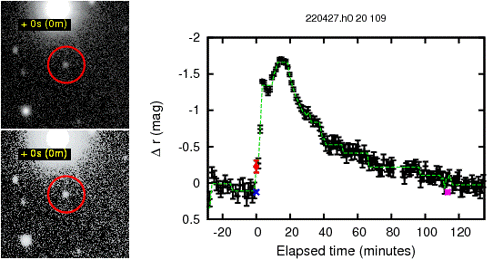


Based on one-month long MMT time-series observations of the open cluster M37, we monitored light variations of nearly 2500 red dwarfs and successfully identified 420 flare events from 312 cluster M dwarf stars.
For each flare light curve, we derived observational and physical parameters, such as flare shape, peak amplitude, duration, energy, and peak luminosity. We show that cool stars produce serendipitous flares energetic enough to be observed in the r-band, and their temporal and morphological characteristics are almost the same as those in traditional U-band observations. We also found many large-amplitude flares with inferred \Delta u > 6 mag in the cluster sample which had been rarely reported in previous ground-based observations.
Following the ergodic hypothesis, we investigate in detail statistical properties of flare parameters over a range of energy (E_r ~ 10^31-10^34 erg). As expected, there are no statistical differences in the distributions of flare timescales, energies, and frequencies among stars of the same age and mass group. We note that our sample tend to have longer rise and decay timescales compared to those seen in field flare stars of the same spectral type and be more energetic. Flare frequency distributions follow power-law distributions with slopes 'beta' ~ 0.62-1.21 for all flare stars and 'beta' ~ 0.52-0.97 for stars with cluster information (P_mem >= 0.2). These are in general agreement with previous works on flare statistics of young open clusters and nearby field stars. Our results give further support to the classical age-activity relations.
* Paper - Photometric Study on Stellar Magnetic Activity: I. Flare Variability of Red Dwarf Stars in the Open Cluster M37 (Chang et al. 2015c, ApJ, 814, 35) or ArXiv:1510.01005



Catalogs |
||
Observational parameters of 604 flare events detected in the whole sample (Table A1) |
text |
|
fits |
||
Physical parameters of 420 flare events detected in the cluster sample (Table A2) |
text |
|
fits |
||
Note: The following is a list for the related works.
Oct 20, 2015: Published on-line catalog. M37Flare Cat.
History: